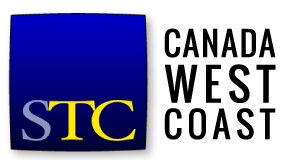Joe Welinske of Writer’s UA has kindly offered STC CWC members a free webinar. He’ll leave the last 20 minutes or so of the presentation for questions and answers.
Please send your selection(s) in your rsvp to president [at] stcwestcoast.ca no later than Friday, March 11 if you wish to attend. I will send your email address to Joe, who will then forward you the webinar invitation.
To learn more about Joe, visit his website.
Topic: Optimizing the Googleability of Your Content
Despite our best efforts at developing user assistance, it is increasingly likely that your users will turn to Google for answers to question about your software. The success Google has in providing quick answers to difficult questions has made it a natural resource for help with software – even if the software provides tutorials, online help, FAQs, forums, and e-mail support. Since this trend will probably continue, we need to learn how to “embrace the beast”. There are a number of things you can do to improve your Googleability without too much time and money. This session describes how Google indexes information and what you need to do to be visible, how to use search engine optimisation techniques (including the use of sitemaps and metadata), how writing styles affect indexing, and what other search engines you may want to support. Search engine optimization is not just the realm of consumer web sites and marketing folks. The importance of visibility on the web means that all of us need to have a working understanding of how search engine work. More importantly, we need to understand how to make that work for us and our content.
You Will Learn:
- The importance of getting your content on a public-facing server and the challenges in doing so.
- How Google indexes information and delivers it to search queries
- How to add a variety of search engine optimization techniques to your content production
- About the importance of supporting social networks and mobile devices
This session is designed for content developers of all experience levels. A basic understanding is required of web markup and the client/server process. No specific understanding of tools is required.
Topic: Touch, Voice, and Gestures
How to craft your user assistance to accommodate a variety of interaction types: New ways of interacting with software, like touch and voice, mean a rethinking of how we develop our associated user assistance. This session is a guide for appropriate language choices to use for emerging interaction types like touch, voice, and hand gestures. Topics include device-specific instructions using conditional text, micro-concise instructions for small screens, writing for first user experience, flat navigation, and options for voice support. This session applies to both mobile platforms and the emerging use with desktop systems.
Topic: An Aggressive Approach to Concise Writing
Writing concisely is one of the fundamental skills central to any mobile user assistance. The minimal screen real estate can’t support large amounts of text and graphics without extensive gesturing by the users. Using small font sizes just makes the information unreadable unless the user pinches and stretches the text. Even outside of the mobile space, your ability to streamline your content improves the likelihood it will be effectively consumed by your target audience. This session offers a number of examples and techniques for reducing the footprint of your prose while maintaining a quality message. The examples used are in the context of mobile UA but can be applied to any technical writing situation.
Topic: Trends in Mobile User Assistance
Smartphones have sparked a huge, new software segment – the mobile app. This creates an important pair of questions for user assistance professionals: What is our role going forward in mobile and how can we prepare to take that on? User Assistance does have a role in supporting mobile apps. As the mobile app market continues to soar, this is becoming the next frontier for user assistance professionals. This session provides an overview of current issues regarding design, writing, tools, and planning of your mobile UA. You Will Learn About contemporary design for user assistance in mobile apps. Why traditional desktop UA translates poorly to the small screen. What techniques are particularly useful to employ.

